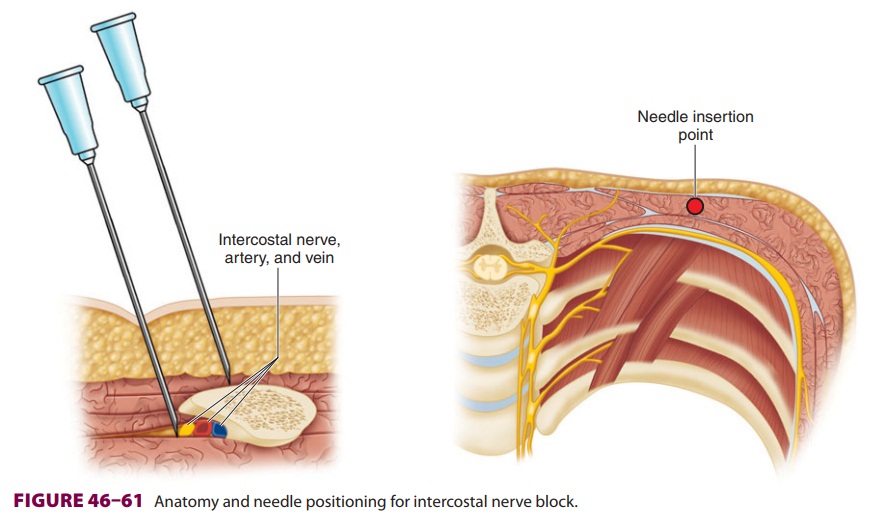Chapter: Clinical Anesthesiology: Regional Anesthesia & Pain Management: Peripheral Nerve Blocks
Peripheral Nerve Blocks of the Trunk: Intercostal Block

Intercostal Block
Intercostal blocks provide analgesia
following tho-racic and upper abdominal surgery, and relief of pain associated
with rib fractures, herpes zoster, and cancer. These blocks require individual
injections delivered at the various vertebral levels that corre-spond to the
area of body wall to be anesthetized.Intercostal blocks result in the highest
blood levels of local anesthetic per volume injectedof any block in the body,
and care must be taken to avoid toxic levels of local anesthetic. The
intercostal block has one of the highest complication rates of any peripheral
nerve block due to the close proxim-ity of the intercostal artery and vein
(intravascular local anesthetic injection), as well as underlying pleura
(pneumothorax). In addition, duration is impressively short due to the high
vascular flow, and placement of a perineural catheter is tenuous, at best. With
the advent of ultrasound guidance, the paravertebral approach is rapidly
replacing the intercostal approach.
The intercostal nerves arise from the dorsal and ventral rami of the
thoracic spinal nerves. They exit from the spine at the intervertebral foramen
and enter a groove on the underside of the correspond-ing rib, running with the
intercostal artery and vein; the nerve is generally the most inferior structure
in the neurovascular bundle (Figure 46–61). Branches are given off for
sensation in a single dermatome from the midline dorsally all the way to across
the midline ventrally.
With the patient in the lateral decubitus or supine position, the level
of each rib in the mid and posterior axillary line is palpated and marked.
A small-gauge needle is inserted at the inferior edge of each of the
selected ribs, bone is con-tacted, and the needle is then “walked off ”
inferi-orly (Figure 46–61). The needle is redirected in a slightly cephalad
direction and advanced approxi-mately 0.25 cm. Following aspiration, observing
for blood or air, 3–5 mL of local anesthetic is injected at each desired level.

Related Topics